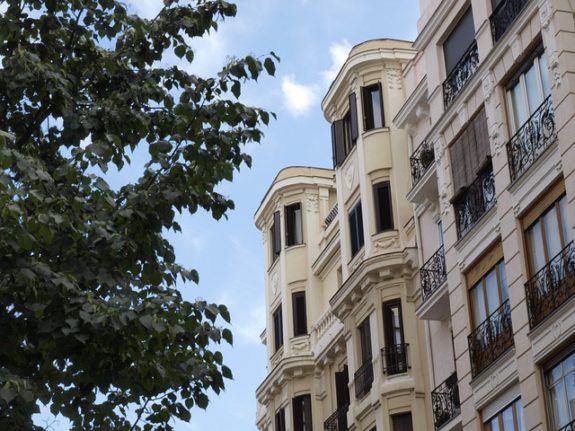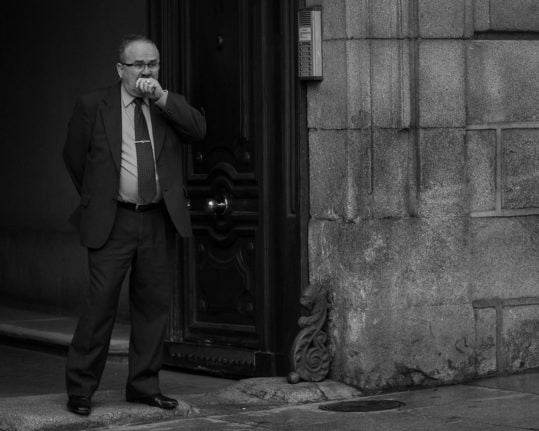[ad_1]
The subject of the Community is a thorny one in Spain itself because everyone always has a weird and wonderful story about someone they live with in a community setting.
And it’s not just for people living in apartments, oftentimes you will find that there are community costs with houses which we shall also look at.
If you live in a community and don’t have a story like this then the neighbours think you are the story, “the strange English speaker who lives on the fourth floor who nobody knows what they do“. There was even a film made by Alex de la Iglesia starring Carmen Maura about these weird things and the happenings in them.
Effectively the vast majority of properties in Spain are sold freehold meaning you own them outright but obviously if you have an apartment in a building then you only hold a percentage of the freehold which is decided on a percentage basis. What percentage of the whole freehold does your apartment make up? It depends on the percentage of the size of the whole building that your apartment comprises.
All of the building fees every month are estimated so that the community runs a slight surplus. Let’s say the costs for a building, electric, lift, insurance, cleaning etc… come to €900 per month and there are 30 flats in the building.
The community will charge around €1,200 for each month and divide that between the doors in the building and make sure to run a small surplus (This becomes important later). So if we assume every flat is the same size and has the same percentage of the whole building then each door will pay €40 per month. Usually this money will be directly debited from your bank account every three months meaning a quarterly payment of €40.
The surplus
The extra money each month goes into the bank as a float for when issues come up with the building that need attention. For example every ten years or so the community may decide that the facade is looking a bit grubby and needs a good paint and they use the surplus so that they don’t have to ask for an extra amount from each owner.
The derrama
The derrama (apportionment) is the most hated thing in the Spanish community setting along with “the guy who loves loud flamenco on the second floor“.
Sometimes costs increase because a major repair needs to happen to the building and it’s not something covered in the insurance policy that the owners contract to look after civil responsibility and accidents in the common areas. This is called a “derrama“. In these cases the community has a meeting of everyone and decides on the action to take. Usually there is agreement on the steps needed and the community will get three quotes for the work to be done before giving it to the brother in law of the current head of the community.
When you are buying a property your lawyer should be checking how much the monthly community fee is and if there is a current “derrama” in place or any upcoming works for which you will be liable on buying the property.
So far so good! Sounds easy, right?
How much is the community?
How long is a piece of string? Community costs have many variables. We have seen community costs from 6 Euros per month, or even zero in a few cases, up to 600 Euros per month in an outlying case. Obviously these numbers can affect your decision on whether to buy a property or not. We will start with the basic costs and then look at how costs rise according to certain facilities and situations in buildings.
A basic community cost of around €10 a month will be found in the following situation, in an apartment with no lift, where the neighbours are expected to take turns to clean their part of the stairwell every couple of weeks and where Pepe from number 6 does all of the paperwork because he is retired and has time to do it and doesn’t mind doing it!
Pepe in this case is the most powerful man in the building who you don’t want to fall out with and everyone secretly hates despite the fact that he sorts out all the hassle that comes up with the building.
You take your money to Pepe’s door every month and he gives you a hand written receipt on a piece of yellowing paper taken from a ledger that he has been using for years. Let it be known that if you are even two days late with payment then everyone in the building will know through “whispers” and within three days a note will be placed in the stairwell that “The English speaking person in door 7 hasn’t paid their community fee this month, making you a leper in the Community for the rest of time.

Photo: Andrés Corredor/Pixabay
What influences community costs?
You pay higher community costs in the following situations.
There is no Pepe. In theory you become the Head of the Community by default once every ten years in a building with ten apartments. If you are unlucky the community will have another job of Treasurer which you also do every ten years. If the community agrees that Pepe can do it and Pepe agrees then you have the situation above. If there is no Pepe and people don’t fancy doing the work then the community on a majority vote can decide to employ a “gestor” to do the community work. The gestor, often called Pepe, will deal with any issues arising from the building and make sure everyone pays up to date, however this comes with a cost and may increase the community fee by 10-15 Euros per month.
READ MORE:
The Elevator
The biggest cost in most buildings is the running cost of the lift or elevator. It causes an increase in cost of electricity of cause in the common areas and you also require an excellent maintenance contract so that people don’t get stuck in the lift for days on end if it breaks down… and believe me it will. Mr Schindler will do periodic checks on the lift which also costs. Expect a building with a lift to have a minimum community fee of 30 Euros per month even if they have a Pepe looking after the accounts.
If there is no lift and the Community on a majority vote decides to put one in then the costs of the community could go up massively. Not because of the monthly base cost but for the cost of the installation. Again the community will get three binding quotes valid for a couple of years. Let’s say installation of a lift costs €60k. If there are twenty apartments then normally each apartment would have to pay €3000, even those on the ground floor. This is not expected next month. The community will put together a “Derrama” on a quarterly basis where each door will pay perhaps €300 extra per quarter. Once the amount reached is enough to pay the installer the first part of the money then the work is likely to start. Sometimes the installer will get the rest financed through a bank loan with the guarantee of the contract with the community.
If you don’t want a lift and don’t want to pay but a majority do then hard luck, one will be put in still. However it will have a key system and you won’t be able to use it until you buy in, which usually costs more than having decided to pay originally.
In some buildings higher floors pay a higher amount for the installation of a lift as they get extra benefit. A fifth floor flat receives much more benefit (And increased value) from a lift than a first floor apartment. The ideal investment property is a fifth floor without lift where one is going to be installed, you will almost instantly have a 50% rise in value! They are difficult to find though.
The Doorman
Because it’s almost always a man! Sometimes you walk into a building and someone is sat there checking everyone who comes in and leaves the building. The “conserje” is becoming less common over the years but you can still see them especially in some of the more opulent buildings in Valencia and those which have a lot of offices. If your building has a doorman then take into consideration that the doorman must be paid and often this cushy number of a job is very well paid. It used to be less well paid as the doorman would live for free in the “Piso del portero” on the roof and work for less as they had free accommodation. These days most doormen don’t live in the buildings they “look after”.

Photo: Ra_fus/Flickr
And what do they protect the building from? Hawkers, deliveries (Which they will usually sign for and take in), messy corridors and stairwells and helping the older residents with rubbish and other issues. The doorman is the first to know if someone has a problem whether that be medically or in their marriage and is always the person you want to be friendly with if you often visit that building.
The Facilities
If you have a community swimming pool, gym, padel or tennis court, garages to keep clean, gardens and more then you can expect to pay more. These things need cleaning, maintenance and general looking after. However, it’s not usually too much as apartment blocks with ten flats usually won’t have all of these facilities. The cost is generally divided between many apartments, often hundreds meaning the actual price increase isn’t usually excessive.
The Insurance
As the building gets older more things are likely to go wrong and the community needs to be insured in case of things going wrong such as a slab of concrete falling off and killing someone below! Older buildings cost more on the insurance and buildings that are not looked after by the community also have this problem of higher costs over time. However, Spanish buildings are quite solid and not much goes wrong with them in general so insurance costs may remain the same for years as no claims are made.
You will still need individual property insurance for things that go wrong in your own apartment and accidents that may happen along with contents insurance but again, this is pretty cheap in Spain.
Houses
Not in all cases but sometimes you have community costs in houses you buy. This may be for something as simple as the estate having a committee for fiestas in the local park every year and will be voluntary (But expected). But if your house has a shared pool, gardens, or sports facilities or the estate has security or social clubs and community bar then there will be a cost.
Who runs the community?
You do, at least in part. The community is run by those who want to take part in the running of the community, the maintenance of the building and to keep up with the gossip about everyone. But as we all know, the real answer is Pepe does.

Stock photo: Asociación Vecinos DIANA
Comparative Costs
We get clients from the States who laugh at the ridiculously low costs of community fees in Spain compared with Homeowners’ Association costs and Condo fees over there. We get British clients with no concept of these fees but the rest of Europe seems to understand and is cool with the system here. Comparatively Spain is really cheap for the Community fees and people are used to living in Community so generally have a relaxed attitude to the community. If you want to see what happens when things fall apart then watch the film.
Graham Hunt is a real estate expert with years of experience in the Valencia property market. You can read more of his articles on his website Valencia Property.
[ad_2]
Source link